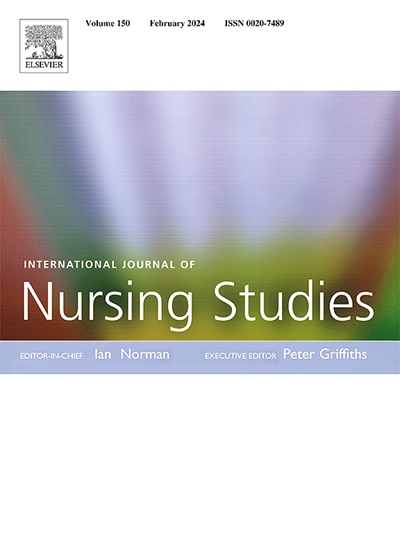Comparison of the effects of 19 exercise interventions on symptoms, pain, balance, and muscular strength in patients with chemotherapy-induced peripheral neuropathy: A systematic review and network meta-analysis
IF 7.5
1区 医学
Q1 NURSING
引用次数: 0
Abstract
Background
Exercise can improve the symptoms of chemotherapy-induced peripheral neuropathy. Traditional pairwise meta-analyses of exercise interventions can only identify the difference in effect between an exercise intervention and usual care. It is necessary to conduct network meta-analyses to establish evidence on the comparative effectiveness of all relevant exercise intervention strategies.
Objective
To evaluate the comparative effectiveness of all known exercise interventions for chemotherapy-induced peripheral neuropathy, rank the best exercise intervention and explore the influencing factors of exercise intervention.
Design
Systematic review and network meta-analysis.
Methods
A comprehensive search was conducted in 14 databases. Risk of bias assessment, quality of evidence, sensitivity analysis, subgroup analysis and meta-regression were performed on the included studies. A network meta-analysis was used to identify the optimal exercise intervention.
Results
Twenty-four eligible studies were included, and a total of 19 interventions were identified. Regular physical training combined with sensorimotor exercise, sensorimotor exercise, aerobic combined with resistance and balance training, aerobic exercise and resistance training had statistically significant differences in reducing CIPN symptoms with SMD and 95 % CI were − 1.06 (− 1.77, − 0.36), − 0.61 (− 1.08, − 0.14), − 1.88 (− 2.81, − 0.94), 0.94 (0.39, 1.49) and − 1.31 (− 1.87, − 0.74). For pain, the most effective interventions included hand-foot exercises, aerobic combined with resistance training, muscular strength combined with balance exercises, SMD and 95 % CI were − 1.99 (− 2.85, − 1.13), − 1.13 (− 1.58, − 0.67) and − 1.04 (− 1.66, − 0.41). Endurance combined with strength training, endurance combined with resistance and balance training, regular physical training combined with sensorimotor exercise and balance training were found to be effective in treating balance with SMD and 95 % CI were 1.61 (0.74, 2.48), 1.10 (0.31, 1.88), 0.92 (0.23, 1.61), and 1.40 (0.59, 2.21). Nerve gliding exercises, aerobic combined with resistance and flexibility exercises, endurance combined with strength training, aerobic combined with resistance training and balance training were found to be effective in treating muscular strength with SMD and 95 % CI were 1.09 (0.48, 1.70), 0.94 (0.29, 1.60), 1.13 (0.32, 1.94), 0.75 (0.51, 1.00) and 1.00 (0.23, 1.76). Subgroup analysis showed that frequency of exercise, duration of exercise, exercise time per session, type of exercise supervision, types of cancer, types of chemotherapy drugs and age had a significant effect on CIPN patients.
Conclusions
This network meta-analysis found that multimodal exercise, consisting of aerobic, balance, resistance and sensorimotor training, was the most effective intervention for CIPN in adults. Healthcare professionals should consider the effects of patient characteristics and different exercise doses on CIPN patients.
Registration
CRD42024500334.
求助全文
约1分钟内获得全文
求助全文
来源期刊
CiteScore
15.00
自引率
2.50%
发文量
181
审稿时长
21 days
期刊介绍:
The International Journal of Nursing Studies (IJNS) is a highly respected journal that has been publishing original peer-reviewed articles since 1963. It provides a forum for original research and scholarship about health care delivery, organisation, management, workforce, policy, and research methods relevant to nursing, midwifery, and other health related professions. The journal aims to support evidence informed policy and practice by publishing research, systematic and other scholarly reviews, critical discussion, and commentary of the highest standard. The IJNS is indexed in major databases including PubMed, Medline, Thomson Reuters - Science Citation Index, Scopus, Thomson Reuters - Social Science Citation Index, CINAHL, and the BNI (British Nursing Index).

 求助内容:
求助内容: 应助结果提醒方式:
应助结果提醒方式:


